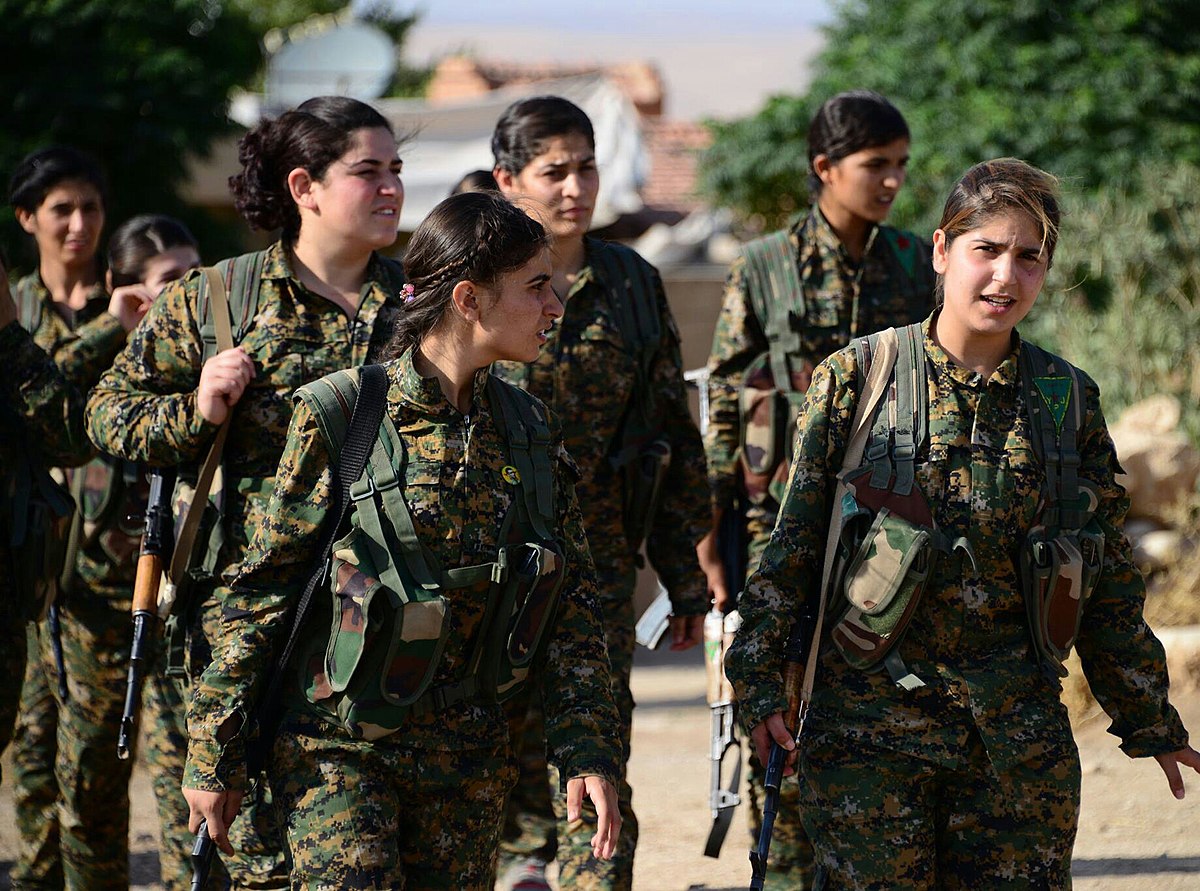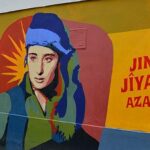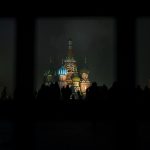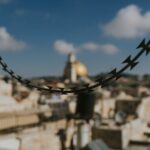The recent Islamic State attack on the Ghwayran prison in Syria has drawn international attention to the Syrian Democratic Forces and its struggle against the IS. This article points out some common pitfalls of news reporting on the issue, flaws that in some cases risk lending credence to an IS framing of the conflict.
In the Syrian city of al-Hasakah in the neighborhood of Ghwayran is a prison holding thousands of Islamic State (IS) detainees. The prison is run by the Autonomous administration of North and East Syria, and controlled by its military, the Syrian Democratic Forces (SDF), as well as local security forces. The prison also contains 700 children of IS militants, many of whom are held in detention as their home countries refuse to bring them home.
On the night of January 20th this year, residents of al-Hasakah awoke to smoke, fire, and commotion as two car bombs exploded in the vicinity of the prison. Soon IS militants attacked the prison with heavy gunfire. Simultaneously a riot broke out inside the prison, succeeding in overpowering guards and capturing weapons from the prison armory. As IS took control of parts of the prison some SDF guards were taken hostage, and civilians refusing to cooperate were massacred. The SDF acted swiftly in sending forces to counter the IS attack, yet fighting in and around the prison lasted 10 days before the SDF regained full control.
The attack on Ghwayran was the largest IS operation in Syria in years, and the actions of IS fighters inside and outside the prison suggest high degrees of coordination between them. The Ghwayran siege received considerable international media attention, yet the portrayal of events was characterized by the systematic omission of some facts and distortion of others. Below, particularly salient flaws in the news coverage will be addressed and contextualized.
The troublesome friend-enemy distinction
The international coalition against the Islamic State led by the United States military provided air support to SDF forces in al-Hasakah as they fought back the IS operatives. Yet at the same time, SDF reinforcement forces on their way to the siege were targeted by airstrikes from US ally Turkey. The SDF continuously reports how Turkey is counteracting SDF anti-terrorist operations, yet this role of Turkey is often overlooked in international news reporting. At the same time, Turkey, at least nominally, participates in the international coalition against IS.
The SDF continuously reports on how Turkey is counteracting SDF anti-terrorist operations, yet this role of Turkey is often overlooked in international news reporting.
There is a glaring contradiction inherent between the military support the US-led coalition gives the SDF and their silence on the actions of Turkey. The coalition carefully avoids engagement with the question of Turkish attacks on the Autonomous administration of North and East Syria. While the SDF is lauded as a valuable ally in Syria, international coalition members maintain terrorist designations on the Kurdistan Worker’s Party. Thereby the coalition lends credibility to the violent repression in Turkey of a socialist movement that shares ideology with the Autonomous administration of North and East Syria.
Photo: US patrol in eastern Syria, 10 November 2019, Wikimedia Commons.
As US Special Operations Forces eliminated top IS commanders in Syria early in February, SDF spokespeople pointed out that one of the two eliminated commanders lived very close to Turkish military bases. The SDF has repeatedly argued that the areas in northern Syria captured by Turkey function as a veritable safe zone for IS fighters. This “safe zone” was established after the withdrawal of US troops from Syria in 2019, enabling Turkish forces to attack the SDF and establishing a buffer zone between the autonomous administration and the Turkish border.
The Turkish attacks on SDF forces in connection with the al-Hasakah siege point to possible Turkish-IS collusion, and the SDF claims interrogation of captured IS fighters after the siege gave further indications of the prison break having been planned in Turkish-controlled areas of Syria.
A typical ideal being pursued by journalists is to simplify the complex, in order to make it comprehensible to the audience. Yet some issues cannot be simplified without the risk of the issue being portrayed inaccurately. The ambiguous relationships between the SDF, the United States, and its allies, Turkey in particular, at times make role distribution and elaboration of context a hard task for journalists.
Kurdish-led forces?
On the note of simplification and inaccuracy, one of the most harmful distortions international media organizations have committed when describing the prison break is characterizing the SDF as a solely Kurdish force. In reality, over 50 percent of the SDF consists of Arabs, and people of many other ethnicities participate in the forces as well.
This mischaracterization of the SDF is particularly harmful as it leads to an ethnic framing of the conflict between the IS and the SDF. That is, a framing of the conflict as fundamentally about opposed ethnicities that are ascribed unchanging, essential, characteristics. Such “primordialism” which denies that ethnicity is socially constructed is commonly used to justify ethnic violence. It is notably used by the IS in its propaganda against the SDF. Thus, ethnic framing in news reporting inadvertently plays into the hands of the IS.
As of today thousands of IS fighters, women, and children of whom a sizeable proportion are citizens of western countries remain in camps and prisons across the autonomous administration. The SDF has managed against all odds to defend its democratic, feminist administration from multiple adversaries. Western powers have failed to take minimal responsibility for its citizens, endlessly evading the question of repatriation. The least Western media organizations could be expected to do is not to misrepresent essential aspects of the conflict.
Johannes Malmgren
Johannes Malmgren holds a Master of Science in Media and Communication with specialization in political communication.





